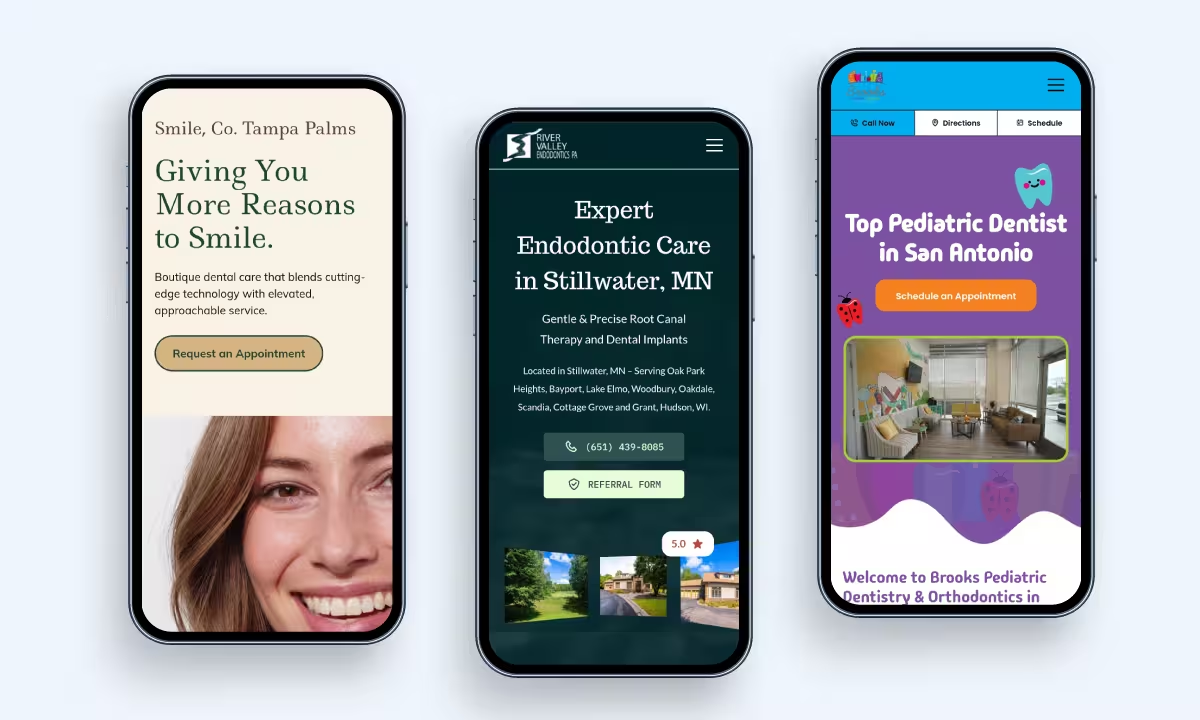Do Phone Calls Even Matter? Isn’t that Old School?
While online scheduling and new patient forms setting the trend for modern dental practices, the reality is - 60% of consumers prefer to call businesses over the phone when seeking more information. Especially in an industry as personal as dentistry, patients have concerns about choosing a new practice. Choosing a new dentist as a patient is an emotional process. Your new patient leads will have questions that can't be answered with a one-size-fits-all page on your website.
Identifying Your Weakest Link
As a dental office, your front desk staff is the first human point of contact a prospective patient interacts with. Answering calls promptly and professionally can make a significant impact on patient acquisition, satisfaction, and retention. In the context of this article, let's roll back to the scenario we just described. If you’re using Lasso’s Patient ROI hub, you see the list of incoming calls and where they are coming from - Google Ads. Now there are several reasons why a patient might not convert after calling from a digital ad.
- Price: That's okay, they’re not your ideal patient anyway.
- Location: Your ad targeting is out of whack. Don’t be greedy, narrow your scope.
- Insurance Coverage: It's important to communicate insurance acceptance clearly.
- Underperforming Front Office Staff: This is what we’re here to help with.
Fix Your Front Desk
Now, this isn’t a conversation any practice owner wants to have with anyone on their team, but it’s an important one that will lead to better lead acquisition. Now, before you turn into Gordon Ramsay from an episode of Kitchen Nightmares, you need to gather some information and find the true source of the breakdown. The good news is that you can do this without breathing down your poor receptionist's neck. Using Lasso’s Patient ROI Hub, you can review call history with audio recordings and transcripts so you can take a personalized approach to coaching and mentoring your team.
10 Best Practices for Answering the Phone in a Dental Office
- Train Your Front Office Staff: Provide clear guidelines and expectations for how calls should be answered, including the use of proper language and etiquette. This will ensure consistent and effective communication with patients. Consider role-playing exercises to help staff feel more confident and prepared. You may also want to consider incorporating verbiage that fits your brand.
- Make Yourself Available: Make sure there is always someone available to answer the phone during business hours. This can include dedicating a specific staff member to the task or using call forwarding to a mobile phone during after-hours. Consider using a call answering service during busy times to avoid missed calls, but make sure they are trained on how to handle calls to your dental practice.
- Be Prepared: Have a list of frequently asked questions and information readily available to help staff quickly and accurately answer patient inquiries. This can also include having a system for quickly accessing patient information to assist with appointment scheduling and other requests. Invest in software that streamlines the process and provides easy access to patient information.
You can find a list of the most commonly asked questions here. - Listen Carefully: Encourage staff to actively listen to patients and avoid interrupting them. This shows respect and empathy, and it helps ensure that the staff obtains all necessary information to properly address the patient’s concerns. Consider using active listening techniques, such as repeating what the patient says, to demonstrate that you are paying attention.
- Follow-Up: After each call, follow up with patients to confirm appointments, address any concerns, and thank them for their business. This shows that your practice values their time and input and reinforces the importance of good communication. Use automated email or text message reminders to make the process more efficient.
- Utilize Call Scripts: Having a standard script for answering calls can help ensure consistency and efficiency. Make sure staff are familiar with the script and feel comfortable deviating from it as needed to provide personalized and effective communication.
Get your Free Call Transcript Template - Proven to Convert Patient Leads - Encourage Multi-Tasking: Encourage staff to handle multiple tasks while on the phone, such as scheduling appointments or updating patient information, to make the most of their time.
- Consider Call Volume: Monitor the volume of calls your practice receives and adjust staffing and other resources accordingly. This can include staggering appointment times to reduce call volume during peak hours or adding additional staff during busy periods.
- Provide Feedback: Monitor performance and provide feedback to staff on their phone performance, including both positive reinforcement and constructive criticism. This can help improve their skills and ensure consistent and effective communication with patients.
- Evaluate and Adjust: Regularly check in on your front desk staff and make adjustments as needed. Consider conducting regular patient surveys to gather feedback on their experiences and identify areas for improvement.
Conclusion
At the end of the day, phone calls are still an important part of patient acquisition. By identifying areas of improvement and using these 10 best practices, you can ensure that your phone calls are providing the best possible experience for your new patient leads. To make sure that you’re converting those leads, Lasso’s Patient ROI Hub can help you track down the source of the breakdown and identify areas for improvement. Are you ready to start converting your patient leads over the phone? Call Us at Lasso to get more patient growth tips and strategies to help you get the most out of your incoming calls.




.avif)


